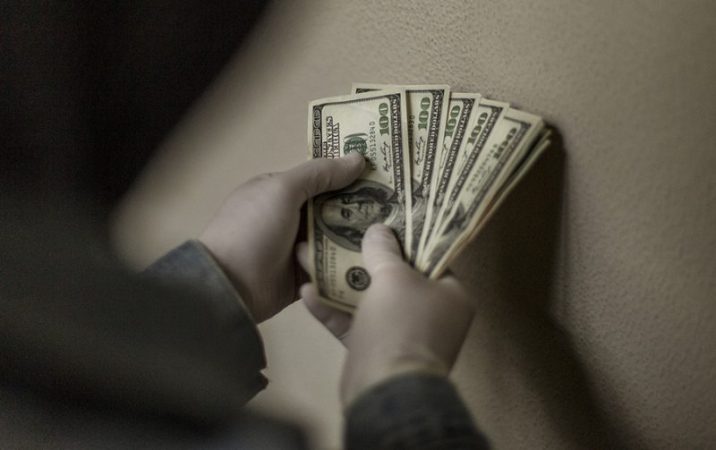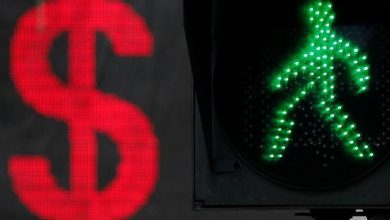
Will the dollar get sick? What threatens your savings, “scattered from a helicopter” in US
US, WASHINGTON (ORDO NEWS) — A set of measures to stimulate the US economy is estimated at $ 2 trillion dollars. Such a large and instantaneous injection of money raises the question of how all this will affect the American currency. Is there any need to be wary of those who keep their savings in US dollars?
Here is a fragment from a letter signed by 24 prominent American economists and investors: “Planned asset purchases are associated with the risk of currency depreciation and inflation (emphasized by the author) , and we do not think that they will achieve the Fed’s goal of promoting employment.”
It should be noted that this is a collective letter that was written on November 15, 2010 and addressed to the then head of the Fed, Ben Bernanke. America’s best minds feared the negative consequences of the quantitative easing program, which was aimed at combating the effects of the 2008 mortgage crisis. From current positions, it is clear that these fears were in vain: the dollar has resisted, and inflation in the country is at reasonable levels.
Will there be the same result after the current program of dealing with the consequences of the new crisis and the “injection” of money into the US economy? To reasonably answer this question, we will have to delve into some details. But first you need to decide on the basic concepts: “ currency depreciation” and “inflation” mean different things, although they are related.
For a Russian, it’s not so important how much a basket of groceries costs in Washington, if he just didn’t intend to move there, how much the question is what is the dollar exchange rate, for example, to the euro or the Swiss franc. This we will understand in this column by the price of the dollar. Although the level of inflation in the country is also important for us, we will consider it solely in terms of the impact on the “strength” of the dollar.
There is a difference
After the 2008 crisis, the struggle against its “fruits” was carried out mainly by supporting banks and other financial institutions - it was necessary to restart the “circulatory” system of the economy. To do this, a mechanism was used to buy out their bad assets from them, thanks to which America managed to resist.
Three quantitative easing companies were required. By March 2009, the Fed had $ 1.75 trillion in bank debts, mortgage-backed securities and treasury bills. That amount peaked at $ 2.1 trillion in June 2010. The measures taken helped to get the country out of the crisis, and at the same time there was no hyperinflation.
Why? This is a very important question for understanding the current situation. All of these trillions of dollars were not mainly poured into the economy in the form of gratuitous aid or new loans, but were used, for example, by banks to maintain “pants”: they made their balance sheets more attractive and allowed to stay afloat.
Now the situation is different: firstly, the scale of the crisis exceeds what the world faced in 2008. This is recognized by almost all experts in macroeconomics. Secondly, the Fed’s contribution to extinguishing the “fire” of the coronavirus crisis has become significantly larger and more diverse. Economists predict that the portfolio of bonds, loans and new programs of the central bank will increase to $ 8-11 trillion, compared with $ 4 trillion last year. In this range, the portfolio will double the size achieved after the financial crisis of 2007-2009, and will amount to almost 50% of annual US production.
Will all this enormous flow of money be managed, and will it not lead to a sharp jump in inflation, and therefore to the depreciation of the dollar - a big question.
There is also a new source of support for business and the country’s population in the form of a special program for $ 2 trillion, which are “injected” into the economy directly from the country’s budget. True, there is no such money in him, and this hole will have to be patched up with debts - most likely, with new issues of government securities. It is estimated that the ratio of US debt to GDP will reach 131% in 2020, exceeding 119% recorded in 1946, immediately after the Second World War (see Figure 1). All this can significantly weaken the dollar exchange rate. For example, some models show that under these conditions, the Japanese yen can strengthen by 15% against the dollar.
Figure 1. US Debt May Reach World War II Levels
It is also important that about 40% of the total amount of the state support program is irrevocable, or “helicopter” money. So, according to the US Treasury, as part of the incentive program adopted in March this year, more than 80 million Americans have already received their $ 1,200 directly to their personal bank accounts. Paper checks - with the name of President Trump on them - began to be mailed to those who have no bank information in the file.
To understand the scale of the American program of assistance to business and the population, let us say that all cash dollars (banknotes) that are currently in circulation in the United States are estimated at approximately $ 1.7 trillion.
It should also be borne in mind that a weak dollar is now in the interests of the United States, especially at the crisis stage. This will allow American products to be much more competitive in global markets. As for Russians or citizens of other countries whose rate on the dollar is connected with solving the problem of preserving their capital, this approach usually means significant losses for them.
All this leads us to the idea that the supporters of the idea of a weakening dollar have some very serious arguments on their hands that make those who have them fully or partially in “green papers” reflect on their savings.
The problem is that this factor should be taken into account right now. Otherwise, if the worst happens, it will be too late to “drink Borjomi.”
How to resist?
Of course, much will be the envy of how events will develop with a pandemic. The faster America emerges from the crisis, the less likely it is that the dollar will weaken significantly. So far things are not going very well. So, for the first quarter, US GDP decreased by 4.8% - this is the largest quarterly drop after the fourth quarter of 2008. The number of applications for unemployment benefits over the past six weeks has reached 30.3 million, and this is not the limit.
What preventive measures can be taken to protect their savings from a possible depreciation of the dollar? The arsenal of tools here is quite diverse. Our task is to minimize our losses in case of depreciation of the dollar. However, before we move on to the analysis of individual features, it is necessary to say the following:
1. There is no need to “run away”. This is especially true for people who have small savings in the US currency and who use them, for example, as an operational “safety cushion” or intend to spend this money for a year and a half.
2. Although dollars may begin to get cheaper not tomorrow or even the day after tomorrow, it is better for wealthy people now, without delay, to make a thorough analysis of their capital and begin to quickly develop a program of effective measures to protect it.
A few years ago, a similar problem with a problem dollar would be solved quite simply: by switching to another currency, in whole or in part. Now it is also possible, but the effectiveness of such an operation has become much less. As you know, the EU is currently going through hard times, so the transition to the euro does not look particularly attractive. There are problems with the traditional protective currency - the British pound. How Brexit will end for her is still unknown.
Everything else - for example, the Swiss franc, Chinese yuan or Japanese yen - is suitable only for smart discussions, but not for storing real money in these difficult times with an unknown ending, unless we are talking about tens or hundreds of millions of dollars, where “Exotic” there is a place. So actually the choice is small,
“If not money, then what?” The reader will think. There are other possibilities, but they, unfortunately, are not for everyone, and in each case it will be necessary to make an informed choice, which depends on the size of your capital, life goals, experience with financial instruments, etc.
The most harmless decision is gold, because, as a rule, its price rises when the dollar falls. Just keep in mind that we are not talking about the precious metal that is in jewelry. Only gold that is traded on the market and has a price can help us. goods that can always be easily bought and sold. It can be, for example, physical gold in the form of ingots.
There are also many excellent gold coins for every taste and budget, there are “gold” funds that are traded on the exchange and which are based on real gold reserves. One of them is SPDR Gold Shares (GLD). Since the beginning of the year, it has grown by 9.73%, reflecting changes in gold prices, while the US broad market index fell by 9.4% over the same time.
However, with all the current attractiveness, this asset is not an ideal solution. The fact is that gold is not constant and can often behave like a “capricious lady . ” It is an excellent asset in times of crisis, but in ordinary life it can also fail. Here is a case that has already become a byword: in August 2011, the price of gold came close to $ 1,900, and many people who bought this precious metal in a hype were at a great loss, because this price level was not reached before so far.
Thus, gold is a good protection against a weak dollar, but, like in the euro or the British pound, all money should not be invested in it. I believe that the optimal share of investments can be 10 - 20%.
Another classic defense against a weak currency is, as you know, real estate. But here, everything is not as simple as it should be in difficult times: most likely, prices will fall in the next year or two, and it’s quite difficult to catch the right moment to buy. In addition, not for all people now such a long freezing of capital will be a suitable solution. In general, everything again comes down to the specific circumstances of a person.
The stock exchange presents a lot of opportunities not only to protect their savings, but also to make money on a weak dollar, but this, of course, is only for those who have long money and can distract them for 3-5 years. I will not bore the reader with a description of all the possibilities in this “clearing”, I will focus only on one specific idea.
As noted above, a weak dollar makes American products more attractive and competitive. Not only foreign consumers, but also producers of these goods benefit. This is especially true for American companies with a large share of exports. These include such well-known brands as McDonald’s, Coca-Cola, Procter & Gamble, Merck & Co., Pfizer, Microsoft, Intel, etc.
I believe that wealthy people could make such investments about 15-20% of the “saved” money. However, specific decisions to protect personal (family) savings should be made only within the framework of a carefully developed individual program, its scrupulous tracking and adjustment.
—
Online:
Contact us: [email protected]
Our Standards, Terms of Use: Standard Terms And Conditions.









